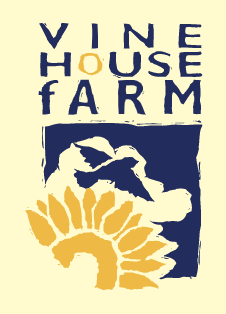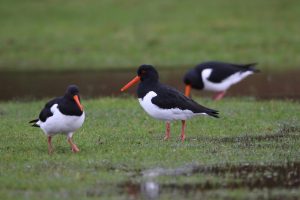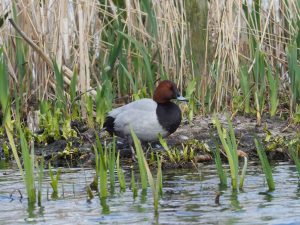
The wet weather continues. For us, here in South Lincolnshire, it has been the wettest Summer and Autumn since 1880. We had a year’s rainfall (533mm/21ins) in five months, between June 7th and November 7th, and a further 76mm/3ins since then. 2019 is already the wettest year that I have recorded, with 725mm/28.5ins.
In those five months in 1880, 660mm/26ins of rain fell. The River Glen burst its banks into Bourne South Fen and the River Welland breached near Crowland. A total of 939mm/37ins of rain fell that year.
Our local drainage board started keeping rainfall records in 1829. During the first 60 recorded years, there were 15 years with over 762mm/30ins of rain. During the last 100 years, only two years were recorded with similar measurements of rain, so clearly we are getting less extreme events. The cause is that there is now more arable land, so more soil is getting washed into our rivers. This means they are getting shallower, their flow is reduced and, as we have more roads and houses, the water reaches the rivers more quickly and we get floods. The experts call it global warming and anticipate we will get more of these extreme events but here in South Lincolnshire we are getting fewer extreme events than we used to.
Who are these experts and what do they know about drainage? During the last week in November I went North from here in Lincolnshire to the River Witham, a river controlled by the Environment Agency. I was appalled at its condition – it is very shallow as it has not been cleared out for 30 years. Many trees were growing along its edge, their branches in the water slowing the flow. The Environment Agency expect it will burst its banks at some time but they do nothing while the trees get bigger and the river gets shallower. I call it criminal neglect. On Friday 29th November the Martin Delph, a tributary of the River Witham, burst its banks overflowing into Martin Fen.
When anyone builds a house or a road in our drainage board district, that person has to pay some money to the drainage board. If it is a big enough housing estate that money will pay for the widening of a dyke, or drain, to the nearest pumping station, so ensuring that we can always take the water away in wet times.
Are the pumps big enough? I know they are because my Uncle, Ray Pick OBE, chairman of our local drainage board, installed some really big pumps in 1967 and not all of them have been used at the same time this summer. This means we have plenty of pumping capacity for the 80,000 acres (126 sq miles) we look after.
All the dykes and drains that the drainage board look after have the vegetation cut and it is left on the top of the bank. Our drainage board, and other drainage boards, have been cutting both sides of the water course which was not good for most wildlife. So over the past 20 years, I have been asking our board, and other boards, to only cut one side of the watercourse at a time. This saves the drainage boards money and we get more wildlife – something that is not usually appreciated by most drainage engineers. Quite a few of our drains are now only mown one side of the watercourse.
One of the drains on our farm – the North Drove drain – has only been cut one side each year since 1990. Here I can find 70 Reed Warbler nests in a 2,800metre length, a few Reed Bunting nests can be seen along with Sedge Warblers, Moorhens, Tufted Ducks and Mallard nests. Before 1990 there would only be a few Meadow Pipits nesting along its banks. Now we have a wildlife corridor. I am now on the board of the Welland & Deepings Internal Drainage Board, in South Lincolnshire.
As I write this however, dry weather is on the horizon – hooray – let’s hope we get some.

As there is so much to say about the weather, there is no detailed farm news this month, apart from the rain causing us many issues with lifting potatoes.


Certainly a lot of wildlife in the Fens have been enjoying the wet weather – ducks and geese especially. I went to do my monthly count of ducks in Langtoft Fen and I have never seen so few ducks on the lakes, I presumed they were all out enjoying themselves as there is water everywhere. By the end of November, there were 600 Wigeon and 100 Teal feeding on our 35 acre wetland site. This is similar to a field containing giant ridges and furrows The ridges are about 50 yards apart and the furrows are filled with water. Cattle were grazing the grass during the Summer and Autumn, now the Wigeon are keeping it short. This will keep it in good order for the Lapwings to nest on next April. Last spring there were 18 to 20 pairs nesting on the 35 acres.
One species which has not been enjoying the wet weather is the Barn Owl as their feathers are not waterproof. They have been lucky that there are a lot of voles around. We have seen the odd one flying in the daytime which means that despite all the rainy weather, they have still managed to catch all their food in the hours of darkness. Tawny Owls are quite scarce in Fenland because we don’t have much woodland, I have never seen any flying in the daytime, have you? If they’ve not been able to catch enough food at night I rather suspect they sit on a branch with their eyes open during the day waiting to pounce. Tawny Owls would prefer to live on voles, but they do have more birds in their diet than Barn Owls. In 2018, when Barn Owls and Tawny Owls had very small broods (if any at all because of a shortage of voles) I was asked to go and ring a brood of three young Tawny Owls. The nest was in a spinney where there was a rookery and I suspected that the Owl was taking young Rooks out of nests at night to feed its young. Voles don’t do well in wet climates either, so that is why there are more Barn Owls in eastern England where there is the least rain resulting in more voles.
We have more Long Tailed Tits about than usual this winter. I put it down to the dry April this year, which is when Long Tailed Tits nest, as last year’s wet April meant there were very few about last winter. A Long Tailed Tit’s nest is a work of art, but I suspect that in periods of heavy rain they would not be waterproof, which could affect chick survival. I’d be interested to hear about the status of Long Tailed Tits in your area this winter.
Fieldfares have arrived in good numbers and we have 500 or 600 feeding on the hedgerow fruits.
As well as doing my bit on the farm, I am also a trustee of the Countryside Restoration Trust, the CRT, which was started by Robin Page. It promotes a working countryside using sensitive and sympathetic farming practices that encourage and protect wildlife to produce quality food. The CRT knows that good farming is essential to wildlife, which I fully endorse. Some of you might like to follow their activities.
TALKS & EVENTS
Winter Bird Watches at Vine House Farm
Saturday 18th January
Saturday 1st February
Tickets £7 – available on our website
Wishing all our readers a very Happy Christmas and a prosperous New Year.



